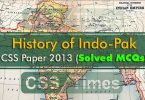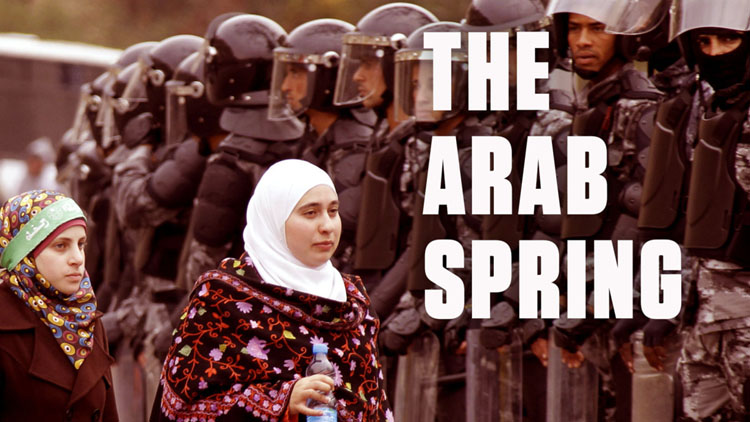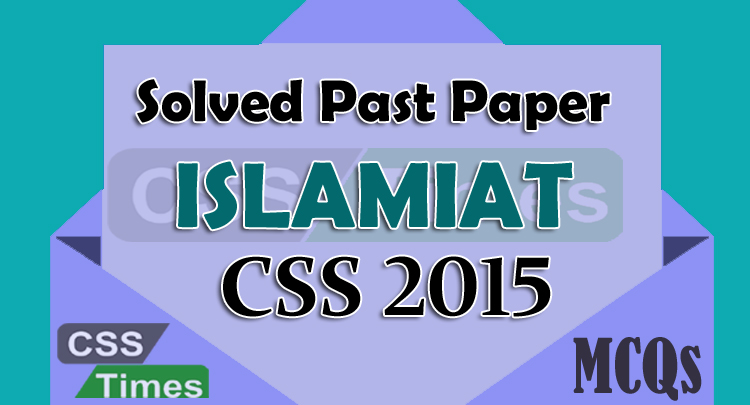FEDERAL PUBLIC SERVICE COMMISSION
COMPETITIVE EXAMINATION FOR RECRUITMENT TO PIN BS-17
UNDER THE FEDERAL GOVERNMENT
General Science & Ability
1) Operation Desert Shield was launched by US in
(a) 2 August 1990
(b) 17 January 1991
(c) 28 February 1991
(d) None of these
Answer: (a)
Explanation: Operation Desert Shield was the US operational name for the US buildup of forces and Saudi Arabia’s defense from 2 August 1990, to 16 January 1991. On 17 January 1991, when it became clear that Saddam would not withdraw, Desert Shield became Desert Storm.
Another Operation Desert Shield was a 2006 operation by the Iraqi insurgency and al-Qaeda in Iraq, planned in December 2005 as a push against American forces during the Iraq War.
2) Operation Enduring Freedom (OEF) was conducted by the US in
(a) Iraq
(b) Afghanistan
(c) Libya
(d) None of these
Answer: (b)
Explanation: Operation Enduring Freedom began on 7 October 2001, four weeks after the 11 September 2001 terrorist attacks on America. Early combat operations included a mix of air strikes from land-based B-1, B-2 and B-52 bombers; carrier-based F-14 and F/A-18 fighters; and Tomahawk cruise missiles launched from both U.S. and British ships and submarines
3) Suez canal was nationalized by Egypt on
(a) July 26, 1953
(b) July 26, 1956
(c) Jul 28, 1955
(d) None of these
Answer: (b)
Explanation: The Suez Canal is actually the first canal that directly links the Mediterranean Sea to the Red Sea. It was opened for navigation on the 17 th of November 1869. Egypt nationalized the canal on the 26 th of July 1956. The Canal was closed five times; the last time was the most serious one since it lasted for 8 years. The Canal was then reopened for navigation on the 5 th of June 1975.
4) Operation Gibraltar resulted into which war
(a) Indo-Pakistani War of 1948
(b) Indo-Pakistani War of 1965
(c) Indo-Pakistani War of 1971
(d) None of these
Answer: (b)
Explanation: Pakistan launched an adventurous course of action initially at the Rann of Kutch and subsequently in Kashmir -Operation Gibraltar -which led to a full-scale war between India and Pakistan in September 1965.
5) The United Nations’ (UN) International Day of Peace is celebrated on September 21 since
(a) 1980
(b) 1981
(c) 1982
(d) None of these
Answer: (c)
Explanation: A UN resolution established the International Day of Peace in 1981 to coincide with the opening of the UN General Assembly. The first Peace Day was celebrated in 1982 and was held on the third Tuesday of September each year until 2002, when September 21 became the permanent date for the International Day of Peace. The assembly decided in 2001 that the International Day of Peace should be annually observed on September 21 starting from 2002.
6) Martin Luther King Jr was assassinated in the age of
(a) 33
(b) 37
(c) 39
(d) None of these
Answer: (c)
Explanation: On April 4, 1968, the Rev. Dr. Martin Luther King Jr., 39, was shot to death in Memphis by an escaped convict, James Earl Ray. In 1999, the King family won a civil suit against a Memphis restaurateur who was said to have hired a police officer to kill Dr. King. “The jury’s decision,” explained, “means it did not believe that James Earl Ray … fired the shot that killed Dr. King.” King has remained the most widely known African-American leader of his era, and the most public face of the civil rights movement, along with its most eloquent voice. President Ronald Reagan signed the King Holiday bill into law in 1983. Construction is underway on a permanent memorial to King, to be located on the Mall in Washington, D.C., near the Lincoln Memorial–the site of King’s iconic “I Have a Dream” speech during the March on Washington in 1963.
7) Ozone layer absorb most of the
(a) Ultraviolet radiations
(b) Sun’s ultraviolet (UV) radiation
(c) Both a & b
(d) None of these
Answer: (c)
Explanation: Ultraviolet radiation is one form of radiant energy coming from the sun. The various forms of energy, or radiation, are classified according to wavelength, measured in nanometres (one nm is a millionth of a millimetre). The shorter the wavelength, the more energetic the radiation. In order of decreasing energy, the principal forms of radiation are gamma rays, X rays, UV (ultraviolet radiation), visible light, infrared radiation, microwaves, and radio waves.
8) World Water Day is celebrated every year on
(a) 20 March
(b) 21 March
(c) 22 March
(d) None of these
Answer: (c)
Explanation: International World Water Day is held annually on 22 March. An international day to celebrate freshwater was recommended at the 1992 United Nations Conference on Environment and Development (UNCED) in Rio de Janeiro. The United Nations General Assembly responded by designating 22 March 1993 as the first World Water Day.
9) What material is used to coat iron in the galvanizing process?
(a) Tin
(b) Zinc
(c) Copper
(d) None of these
Answer: (b)
Explanation: Hot-dip galvanizing is the process of immersing iron or steel in a bath of molten zinc to produce a corrosion resistant, multi-layered coating of zinc-iron alloy and zinc metal. While the steel is immersed in the zinc, a metallurgical reaction occurs between the iron in the steel and the molten zinc. This reaction is a diffusion process, so the coating forms perpendicular to all surfaces creating a uniform thickness throughout the part. The hot-dip galvanizing process has been used since 1742, providing long-lasting, maintenance-free corrosion protection at a reasonable cost for decades. Although hot-dip galvanizing has been utilized to protect steel for generations, the galvanizing process continues to evolve with new technologies and creative chemistries.
10) For purifying drinking water alum is used
(a) for coagulation of mud particles
(b) to kill bacteria
(c) to remove salts
(d) to remove gases
Answer: (a)
Explanation: Aluminium Sulfate, Shortly known as Alum, when added to raw water reacts with the bicarbonate alkalinities present in water and forms a gelatinous precipitate. This floc attracts other fine particles and suspended material in raw water, and settles down at the bottom of the container.
11) The Shahnama or Book of Kings was written by?
(a) Abu-Mansur Daqiqi
(b) Abu Al-Qasim Firdausi
(c) Khosrau II
(d) None of these
Answer: (b)
Explanation: The Shahnameh, Book of Kings, is an epic composed by the Iranian poet Hakim Abul-Qasim Mansur (later known as Ferdausi Tusi), and completed around 1010 CE. The epic chronicles the legends and histories of Iranian (Aryan) kings from primordial times to the Arab conquest of Iran in the 7th century CE, in three successive stages: the mythical, the heroic or legendary, and the historic. It took Ferdowsi thirty three years to complete his epic, by which time the rule of eastern Iran had passed to the Turkoman Ghaznavids (who based themselves in the north-eastern province of Khorasan with Ghazni as their capital). The Shahnameh was written in classical Persian when the language was emerging from its Middle Persian Pahlavi roots, and at a time when Arabic was the favoured language of literature.
12) Galileo’s most famous invention was
(a) Telescope
(b) Steam engine
(c) Calendar
(d) None of these
Answer: (a)
Explanation: The history of the telescope dates back to the early 1600s. Galileo Galilei is commonly credited for inventing the telescope, but this is not accurate. Galileo was the first to use a telescope for the purpose of astronomy in 1609 (407 years ago in 2016, which is currently being celebrated as the International Year of Astronomy). Hans Lipperhey, a German spectacle maker, is generally credited as the inventor of the telescope, as his patent application is dated the earliest, on the 25th of September 1608.
13) The theory that a single dominant power can maintain world peace is called?
(a) Behavioralism
(b) Constitutive theory
(c) Hegemonic stability theory
(d) None of these
Answer: (c)
Explanation: HST indicates that the international system is more likely to remain stable when a single nation-state is the dominant world power, or hegemon. The central idea of this theory is that the stability of the international system requires a single dominant state to articulate and enforce the rules of interaction among the most important members of the system. For a state to be a hegemon, it must have three attributes: the capability to enforce the rules of the system, the will to do so, and a commitment to a system which is perceived as mutually beneficial to the major states. A hegemon’s capability rests upon the likes of a large, growing economy, dominance in a leading technological or economic sector, and political power backed up by projective military power. An unstable system will result if economic, technological, and other changes erode the international hierarchy and undermine the position of the dominant state. Pretenders to hegemonic control will emerge if the benefits of the system are viewed as unacceptably unfair.
14) Ecology is the study of
(a) Earth
(b) Environment
(c) Plant Nutrition
(d) None of these
Answer: (b)
Explanation: Ecology is the scientific study of the distributions, abundance and relations of organisms and their interactions with the environment. Ecology includes the study of plant and animal populations, plant and animal communities and ecosystems. Ecosystems describe the web or network of relations among organisms at different scales of organization. Since ecology refers to any form of biodiversity, ecologists research everything from tiny bacteria’s role in nutrient recycling to the effects of tropical rain forest on the Earth’s atmosphere. The discipline of ecology emerged from the natural sciences in the late 19th century.
15) The self interest perused by individuals causing collective destruction is called theory of
(a) The psycho-cultural theory
(b) The tragedy of justified war
(c) Securitization theory
(d) None of these
Answer: (b)
Explanation: Theorists claim that the waging of war, and the committing of military acts within war, is either just or unjust. This binary distinction should be tempered by the awareness that justified wars are tragic: tragic in the broad sense of inescapably involving moral wronging, but not necessarily tragic in the narrow sense of not having been preventable by the tragic agent himself or herself. Justified war situations that fail to be tragic in the narrow sense are inauthentic. If contemporary just war theorists were to explicitly recognise the tragedy of justified war in the broad sense, as well as the dangers of lacking authenticity, their theory might become less susceptible to abuse by political moralists.
16) The Relative Humidity depends upon
(a) Temperature
(b) Location
(c) Weather
(d) All of the above
Answer: (d)
Explanation: The relative humidity is the percentage of saturation of a specific volume of air at a specific temperature. The relative humidity of air depends on the temperature and the pressure of the air volume of interest. As the unit of relative humidity is percent it ranges between 0 (the air is completely dry) and 100% (the air is saturated).
Thus the mathematical definition is: RH = 100 * E(Td) / E(T), with:
RH = relative humidity [%];
E (Td) = saturation vapour pressure at dew point temperature Td (usually in g/(m^3));
E (T) = saturation vapour pressure at (actual) air temperature T (usually in g/(m^3)).
The relative humidity describes how much water is carried by the air, and is an important factor to determine the development of clouds and precipitation.
17) Infrared radiations from the Sun are strongly absorbed by?
(a) Green houses
(b) Biotransformation
(c) Combustion gases
(d) None of these
Answer: (a)
Explanation: The Greenhouse Effect is the process where infrared radiation from the Sun is absorbed by gases in the atmosphere, thus helping to heat the Earth. An excess of absorbing gases such as carbon dioxide in the atmosphere can drastically change the climate and cause numerous problems.
18) The largest part of our hydrosphere is
(a) Pacific Ocean
(b) Atlantic Ocean
(c) Antarctica ocean
(d) None of these
Answer: (a)
Explanation: The area of the Pacific Ocean, excluding adjacent seas, is judged to be between 63.8-70 million square miles (165.2-181.3 million square kilometers), which is twice the area of the Atlantic Ocean and greater than the total land area of the planet. The Pacific Ocean comprises about 46 percent of the Earth’s water surface, and about 32 percent of its total surface area.
19) Friction can be reduced by changing from
(a) Rolling to sliding
(b) Potential energy to kinetic energy
(c) Sliding to rolling
(d) None of these
Answer: (c)
Explanation: The most common methods used to reduce friction between moving surfaces include polishing the surfaces that come into contact, lubricating the surfaces, using ball or roller bearings and streamlining. Friction is defined as the force that resists one surface from sliding or rolling against another surface. This means that friction is only present when one or both of the surfaces that are in contact are in motion.
20) The latitude ‘AA’ on the map represents the
(a) Tropic of Cancer
(b) Tropic of Capricorn
(c) Equator
(d) None of the above
Answer: (c)







